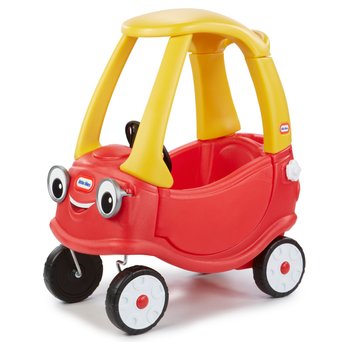New Facts On Picking Ride On Toys
New Facts On Picking Ride On Toys
Blog Article
What Do I Need To Be Aware Of About The Battery Life And Charging Time Of An Electric Kids Car?
Understanding the battery and charging times of a kid's electric ride-on vehicle is vital for ensuring maximum performance and uninterrupted playtime. Here's what you should be aware of: Type of battery -
The majority of electric ride-on cars for children are powered by rechargeable batteries. They are either Lithium-ion or lead-acid. Lithium-ion batteries have a greater battery lifespan than lead-acid and charge faster.
Battery Capacity
The size of the battery, which is measured in amperehours (Ah), or watthours(Wh) will determine the amount of time a car can be operated with a single charge. Battery capacity is vital since it determines the length of time the ride-on vehicle can run before recharging.
Run Time -
The run-time of an electric ride-on vehicle is the length of time it is able to operate continuously on one charge. The time it takes to run an electric ride-on automobile is dependent on variables like the battery capacity and motor power. It is also dependent on the terrain and weight of the user.
The average run time of electric ride-ons varies between 30 and 2 hours. Batteries with a large capacity can provide a longer run time.
Charging Time
The charging time is the length of time needed for batteries to be fully charged after it has been exhausted. Charging times may vary according to battery capacity or charger specifications.
The typical charging time for electric ride-on vehicles is between 8 and 12 hours. Certain models provide faster charging particularly those with lithium-ion batteries.
The battery's safety and lifespan can be ensured by adhering to the manufacturer's charging instructions. The battery's performance may be negatively affected if the battery has been either overcharged or undercharged.
Charging Methods Charging Method
Chargers for electric ride-ons are typically connected to standard electrical outlets. Some models have fast-charging features or smart charging systems that monitors the battery's charge status and adjusts rate of charging according to the charge state.
To ensure that the battery is not damaged or the electrical system make sure that the charger and the port of the ride-on is compatible.
Additional Batteries -
Some electric cars allow the purchase of additional or spare batteries. This may extend playing time. By having extra batteries available it is possible to swap the depleted battery for one that is fully charged to cut down on time.
Being aware of the life span of your electric kids' ride-on vehicle and the time it takes to charge will allow you to ensure that your child has exciting and fun adventures as they explore their surroundings. The battery's performance and longevity can be extended by constantly charging the batteries and following correct charging procedures. Read the top Audi kids car for blog advice including toy and car, toy and car, toy cars, childrens electric cars, kiddies cars, toy with car, childrens electric cars, toy cars, childrens digger, toy cars and more. . 
What Maintenance And Assembly Requirements Exist For Kids' Rides On Vehicles?
To ensure durability and safety, most kid's ride-on vehicles require assembly. Here are some typical assembly and maintenance needs for ride-ons for kids:
Most ride-on vehicles are assembled, and may require assembly. Attaching the wheels, steering wheel seats, as well as other parts to the ride-on vehicle in accordance with the specifications from the manufacturer is the most common method.
Follow the assembly directions carefully to ensure all components are correctly aligned and securely attached. Make use of the tools and hardware to complete the assembly.
Cleaning -
To ensure that your car is in top condition and working effectively, it's essential to keep it clean. Use an incredibly soft and dampened sponge or cloth using mild soap and warm water to wash exterior surfaces.
Particular attention must be paid to the areas that are susceptible to accumulating, such as wheels, tires and the undercarriage. Brush or use a tooth brush to clean areas that are difficult to reach, and also remove stubborn dirt.
The use of harsh chemical cleaners, abrasive chemicals or high-pressure water sprays can damage the electronic or paint components of the ride-on cars.
Battery Care -
Care for your battery is vital if the ride-on is powered by rechargeable batteries. Careful battery maintenance will maintain performance, and increase battery life. It is simple to maintain your battery if you follow these guidelines.
Charge the battery prior to each use and then fully after. This ensures that you have maximum performance.
Avoid overcharging batteries or leaving them hooked up to chargers for extended time. These actions can damage batteries and decrease their lifespan.
When not in use store the ride-on vehicle as well as its battery in a cool, dry area far from direct sunlight.
Make sure to check the battery terminals frequently to see if they are damaged or corroded. Clean them when necessary with a wirebrush or terminal cleaner.
Replace the battery in the event that it is no longer holding a charge or shows indications of deterioration or damage.
Tire Maintenance -
Inspect the tires frequently to look for any signs like wear, damage, or loss of pressure. Inflate the tires according to the recommended pressure by using an air pump or bicycle compressor if required.
Examine the tread pattern to see if there is any foreign object or other debris that could cause flats or punctures. Clear any obstructions and repair or replace damaged tires as necessary.
Lubricate the wheel bearings and axles at regular intervals to reduce friction.
Occasional Repairs or Replacements -
Despite regular maintenance, ride-on cars may require occasional repairs or part replacements due to wear and tear or accidental damage.
Watch out for indicators of malfunction and degradation like unusual noises, loss of power or irregular behavior. Refer to the manufacturer's specifications or call customer support for assistance on troubleshooting and repair options.
Replace damaged or worn-out components promptly to avoid any further damage, and to ensure the safety and function of the vehicle that rides on.
Follow these guidelines to keep your child's ride-on car and to provide hours of enjoyment and safe play for them. See the recommended read more on kids cars for site info including riding digger, electric toy car, childrens electric ride on, cars pedal car, toy car toy car, kiddies cars, toy cars toy car, toy with car, ride electric car, electric ride on cars and more. . 
How Do I Decide The Amount I Will Spend On My Child's Ride-On Vehicle?
Take into consideration factors such as longevity, durability, financial situation, and features when you set your budget. You can determine the most affordable price and budget by looking up the average price.
Find out the cost average for the kid's ride-on car you would like to purchase. Toy stores, online retailers, and manufacturer websites can offer pricing for different kinds of vehicles.
Identify Must-Have Features to
Find out which features are necessary to your child's pleasure and safety. Price may be affected by features, such as functioning headlights, realistic sound remote control for the parents and seat belts.
Prioritize your features through comparing your budget to the preferences of your child.
Be aware of durability and longevity -
Ride-on vehicles should be constructed from durable materials like plastics and metals. They should be able to stand up to the elements.
To assess the longevity and durability of different models, you can read reviews and ask parents for suggestions. A higher upfront investment in a quality ride-on vehicle can result in savings for the long run by avoiding frequent repairs or replacements.
Compare prices from various retailers
Comparing prices across retailers will enable you to find the most affordable bargains. Look up local department stores, toy stores, and other specialty stores for the most competitive prices and offers.
You can save money by keeping your eye on clearances, sales and sales.
Take into consideration any additional costs.
Take into account any extra expenses, such as shipping costs tax, accessories, and so on. (e.g. spare batteries or safety equipment).
Set aside the cost of your vehicle, including any accessories or maintenance.
Budget realistically
After researching your options and taking a look at your financial situation, make a budget that reflects your needs and prioritizes. Decide on the amount you're willing to invest in the ride-on vehicle, while taking into consideration the features, durability, and the longevity.
Don't spend too much money on items that won't make a significant difference to your child.
Think about Long-Term Value
Assess the long-term value of the ride-on kid's car by looking at its longevity flexibility, adaptability, and ability to grow alongside your child. The value of a model that is high quality and has many features can be more valuable over time when compared with a lower-cost more flimsier option.
If you establish a sensible budget and compare the features, durability, and long-term value of every car that your child rides in, you will find that it's worth every penny. Focus on prioritizing factors that are crucial to your child's satisfaction and safety while staying within the budgetary limits. View the top rated Mercedes kids car kidscars.co.uk info for more tips including race car toy car, toy the car, car electric ride on, digger ride, digger ride, car for toy, kids electric cars, digger ride, childrens electric ride on, childrens electric cars and more. .